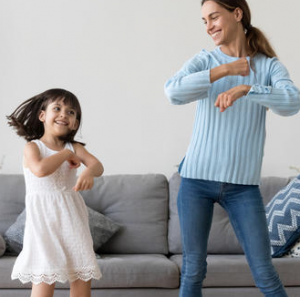By Allison Perry
University of Kentucky
With people of all ages now staying at home as much as possible to help slow down the spread of the novel coronavirus (COVID-19), it can be easy to become sedentary. But one of the best things you can do for both your physical and mental health is to make an effort to get regular physical activity. Here, some experts from the University of Kentucky Sports Medicine Research Institute (SMRI) break down why staying active is so important, especially now.
If you’re remaining indoors and working, you might be sitting for long periods of time. Why is that bad for you?
Nick Heebner, assistant professor and director, SMRI: Sitting for a long period of time, especially day after day, can take a toll on your body without you realizing it.

First and foremost, for people who have been fairly active, this extended break in activity will lead to a drop-off in their fitness and physical health. Strength and endurance capacity will decrease, and over time, so will your metabolism This in combination with less physical activity will lead to weight gain, and, in the long-term, increase our risk of chronic medical conditions like cardiovascular disease.
For those of us who had regular physical activity built into our schedules, whether it be walking, jogging, or going to a gym, we need to find a way to keep that in our routine despite this disruption to our daily lives.
How often should people get up and move?
Heebner: Just because we are social distancing and isolating ourselves doesn’t mean the national recommendations for physical activity go away. Your body doesn’t know the difference.
The American College of Sports Medicine recommends at least 30 minutes of moderate-intensity activity at least five days per week. Additionally, it’s also best to mix in some resistance training in your routine 2-3 days per week. For those of us that are now spending a lot of time sequestered at home, we need to get creative on how to achieve this.
Dee Dlugonski, assistant professor, SMRI: Every bit of movement counts to reach your daily physical activity goals, so keep it simple – try to move more and sit less throughout the day. Set an alarm on your phone to remind you to get up and move. Walk around while talking on the phone.
Physically, what does exercise do for your body?
Reiley Bergin, research assistant, SMRI: From a physiological standpoint, the body views exercise as a form of physical stress. Over time, our bodies are designed to adapt to increasing levels of physical stress.
For example, many forms of exercise place stress on the cardiovascular system to deliver oxygen and nutrients to working muscles. Continued exercise will eventually lead to a more efficient cardiovascular system. A more efficient cardiovascular system not only helps you when you’re exercising but also decreases your risk of cardiovascular disease.
It’s important to point out that these adaptions to exercise are not permanent. In order to preserve these adaptations, consistent levels of physical stress (i.e., exercise) are needed for extended periods of time.
Does exercise help your immune system?
Bergin: Exercise can help promote a healthy immune system and those who regularly exercise tend to have a reduced risk of infection compared to those with a sedentary lifestyle. However, very intense/prolonged bouts of exercise can temporally compromise the immune system for 24 hours, so getting adequate recovery and sleep is important for restoring immune function.
What does exercise do for your mental health?
Scott Royer, assistant professor, SMRI: Research on depression, anxiety and exercise shows that the psychological and physical benefits of exercise can help improve mood, reduce anxiety and improve overall mental health. Exercise helps to release feel-good endorphins, increase levels of neurotransmitters, take your mind off of worries, gain confidence and cope with daily stressors in a healthy way.
Heebner: During this time, many people are experiencing more stress than they may be used to, which makes staying active even more important.
What are some simple exercises people can do at home?
Dlugonski: You do not need any fancy equipment to stay active. Here are a few ideas – take a brisk walk, try bodyweight exercises like push-ups and squats, use the steps in your house or find your favorite workout video online.
For more information about how active adults and kids should be, along with some ideas for activities, visit Move Your Way.
Additionally, these sites are now offering high-quality, free classes (and all have options for kids and adults):
• Do Yoga With Me
• Fitness Blender
• Cosmic Kids Yoga
• YMCA – Note: you do not have to be a member!

























Thank you for sharing this article! It is so important to focus and be aware of our bodies and our breath helps us to understand what is going on inside. I love the encouragement to take time and pay attention to the signals it is sending us. Great advice!